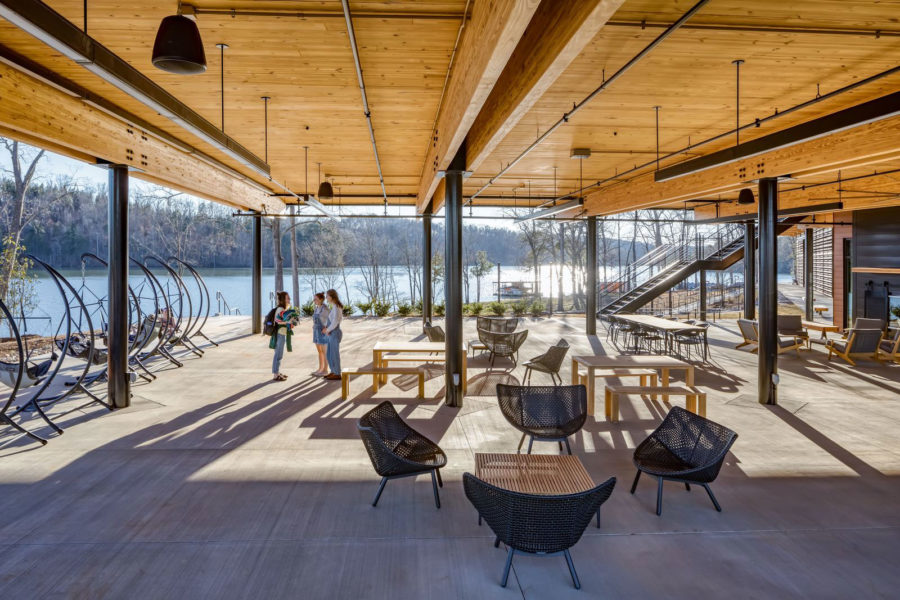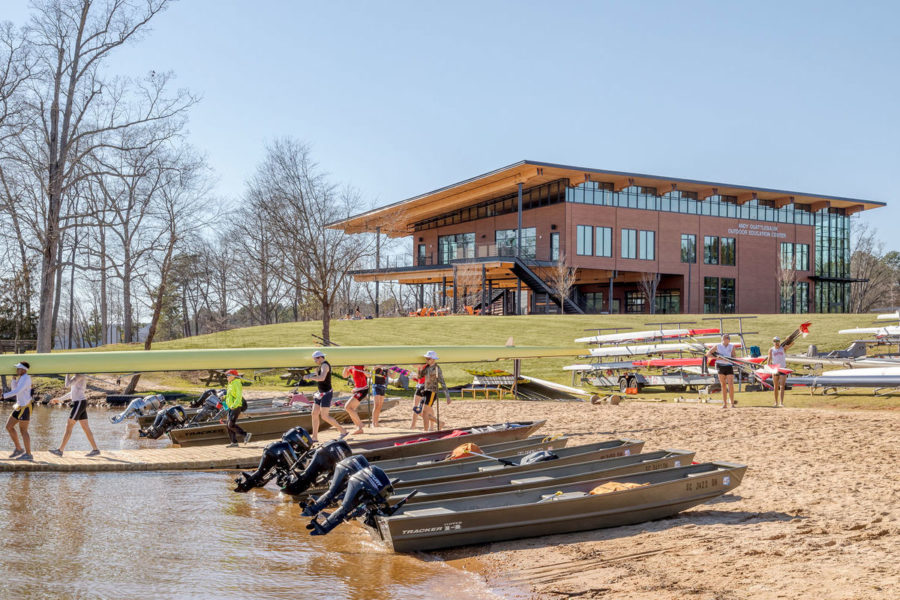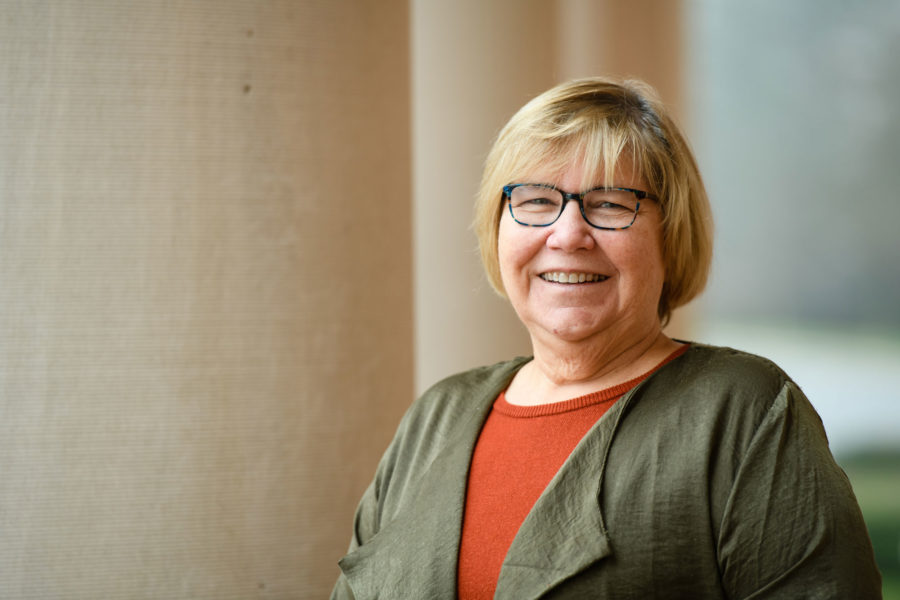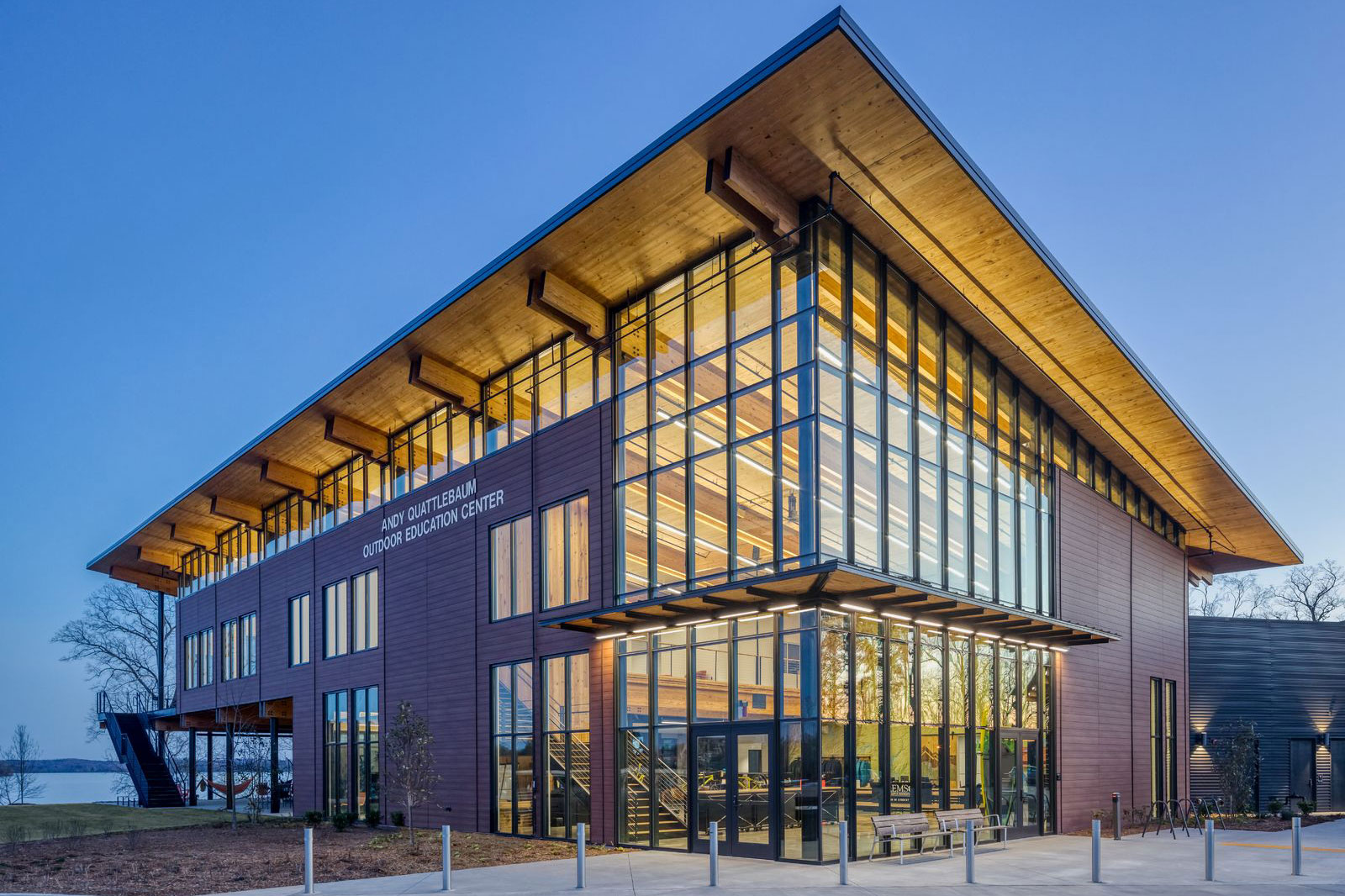Patricia Layton is what you might call a wood doctor. Her educational background includes a bachelor’s degree, master’s degree and a Ph.D in forest genetics. She has served as professor on topics such as wood and paper products, as well as field training in natural resources and forest policy and administration. Today Layton is director of the Wood Utilization + Design Institute at her undergraduate alma mater, Clemson University.
Think Wood recently spoke with Layton about the Institute’s mass timber advocacy mission, as well as one of her most recent projects, Clemson’s Andy Quattlebaum Outdoor Education Center, which recently won a WoodWorks Design Award for regional excellence.

Photo by Jonathan Hillyer
Think Wood: Hi Patricia. Tell us more about the Wood Utilization + Design Institute. What prompted the creation of this initiative at Clemson?
Patricia Layton: Timber is a big economic engine for South Carolina. The forestry industry generates more than $21 billion in revenue for the state economy. At Clemson, we recognized this overabundance of local timber but have lacked adequate markets for wood and mass timber construction. Sawmills have gone out of business and there are limited outlets to sell timber. We created the Institute to work with foresters, architects, engineers, constructors, and building industry stakeholders to identify market share opportunities for wood products and to increase the amount of wood going into nonresidential buildings. Studies show that when there is an active forestry market, landowners more actively manage their land because they can see the economic potential.
TW: What sparked the Institute’s interest in mass timber in particular?
PL: We knew there was an opportunity for growth as we saw mass timber products being developed in Europe and shipped to America. Mass timber is extremely efficient in its build and design. During a build, you can accomplish so much in a very limited period of time. In 2012 we received a grant from the US Department of Agriculture to help develop southern yellow pine CLT, a first-of-its kind product in the US. We collaborated with North Carolina State and the US Forest Service to test the product. After receiving positive results, we used this to build our first mass timber building on the Clemson campus in 2019.

Photo by Jonathan Hillyer
TW: Tell us more about this building, the Andy Quattlebaum Outdoor Education Center.
PL: The center was created as a destination to bring students together for outdoor recreation and socializing. It’s our first mass timber building, and was the second in the country to use southern yellow pine CLT. This facility provides a strong foundation for future innovation at Clemson and beyond. It changed the way we build, the way we work, and the way we help our students enjoy nature. Everyone has been blown away by what the building looks like and how it feels. You just know that feeling when you walk into a mass timber building: It’s warm and inviting, and once you walk in you never want to be anywhere else.
TW: The Center has become a showpiece for Clemson. What has prompted outsiders’ interest?
PL: After we invested our time and effort into mass timber research, we wanted to stand up and be a leader in this space. The center became a showplace and an opportunity for people to see the possibilities of wood construction. In fact the first mass timber building in Mississippi and a private residence in Florida were built because they toured and were inspired by the Quattlebaum facility. Other key universities also are stepping up and saying climate-smart construction is the right thing to do, and they are interested in our project for the same reasons. Arkansas has one of the nation’s largest wooden dorms; Oregon has a brand-new four-story mass timber building; and others are being built because they’ve come to see all of these buildings. For stakeholders, the interest in mass timber links back to their local forest products industry and maintaining healthy, sustainable forests.

Photo by Jonathan Hillyer
TW: Given that the building sits on a university campus, does it also serve as an educational resource?
PL: The center is absolutely an integrated piece of our continued work and education. We are able to have a building that supports our students from a recreational standpoint, while also serving as a resource for mass timber research, including master’s theses on topics like vibration and moisture. We want our architecture students to understand the sawmill. We want them to go to the forest and learn about how the trees are grown. Sustainability is a critical facet of our education. It’s an opportunity to help our broad student body—not just the forestry and architecture students—appreciate this building type. We’ve done a tremendous number of in-person tours, and we’ve had the project architect from Cooper Carry conduct webinars online. We’ve also used the building as a fundraising vehicle, and we’ve been able to help employers find and hire our students.
TW: What challenges does the industry face in the adoption of mass timber construction?
PL: The biggest challenges that the industry faces relate to the supply chain. We have lots of wood, but we don’t have an oversupply of sawmill manufacturing, but with new sawmills coming online, this will help. We’re in the early days of an industrial wood building revolution where structural components are manufactured offsite, shipped, and put into place on-site. The use of mass timber speeds up the construction of a building, allows us to reduce waste, and even to deal with labor shortages in some cases. Getting architects and developers to understand that wood is an acceptable building material for buildings is critical.
TW: What’s next for you and the Institute?
PL: The Institute is focused on innovation, advocacy, and partnerships. We are working with trade associations like WoodWorks and the American Wood Council to advance mass timber initiatives. This includes a number of grants supporting research for projects like CLT noise barriers and wind-resistance testing, as well as templated building designs for the Department of Defense and disaster relief structures for the Forest Products Lab. We’re also in the design stage of a new mass timber forestry building at Clemson. Mass timber as a competitive construction material that will revolutionize how we think about contemporary development, and I’m honored to be one of its many advocates.





